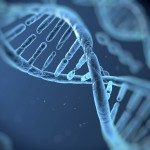Link to Pubmed [PMID] – 22715884
Link to HAL – pasteur-03926768
Link to DOI – 10.1146/annurev-neuro-061010-113705
Annu Rev Neurosci 2012 ; 35(): 509-28
Cochlear inner hair cells (IHCs), the mammalian auditory sensory cells, encode acoustic signals with high fidelity by Graded variations of their membrane potential trigger rapid and sustained vesicle exocytosis at their ribbon synapses. The kinetics of glutamate release allows proper transfer of sound information to the primary afferent auditory neurons. Understanding the physiological properties and underlying molecular mechanisms of the IHC synaptic machinery, and especially its high temporal acuity, which is pivotal to speech perception, is a central issue of auditory science. During the past decade, substantial progress in high-resolution imaging and electrophysiological recordings, as well as the development of genetic approaches both in humans and in mice, has produced major insights regarding the morphological, physiological, and molecular characteristics of this synapse. Here we review this recent knowledge and discuss how it enlightens the way the IHC ribbon synapse develops and functions.



